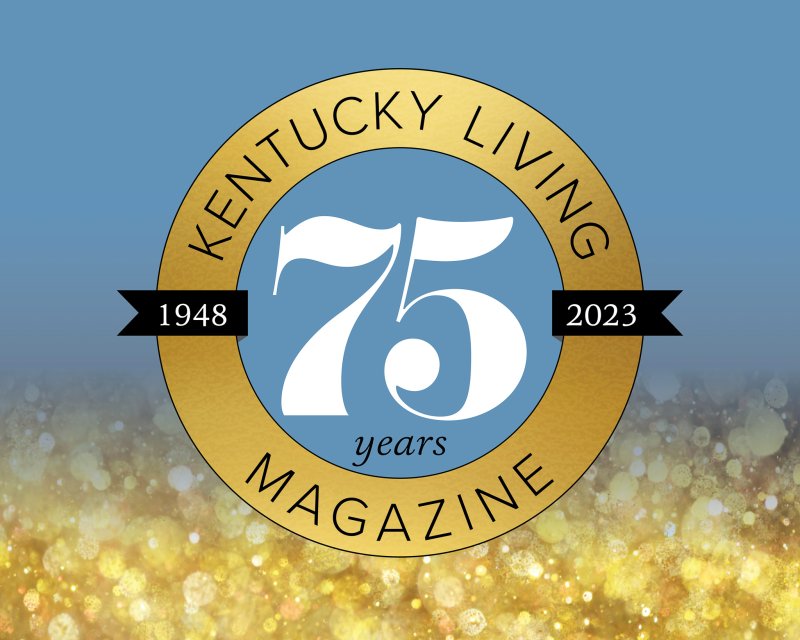
As Kentucky Living magazine celebrates 75 years, we are opening the archives to make selected articles available each month in 2023. Click the links below to sample your magazine through the years on topics like energy and agriculture, education, gardening, travel, food and more.
November: Good health

January 1988: Fighting cancer
The University of Kentucky Markey Cancer Center was just 5 years old when Libby Fraas reported on the center’s contributions to fighting cancer in the commonwealth. As Kentucky saw an increase in lung cancer deaths, the center was on the front lines of research and treatment. In 1986, it had been recognized by the National Cancer Institute as one of 38 leading clinical and research facilities in the country. This year, the Markey Cancer Center became the state’s first Comprehensive Cancer Center, a designation given by the National Cancer Institute.

November 2011: The road to better health
An article by James Nold Jr. shared success stories, research and tools for better health. The issue also kicked off a four-month initiative, called the Kentucky Living Health Club, through which participants shared their health goals, along with three action steps, then received a starter kit with tools to achieve those goals. A Facebook group offered support and encouragement from other readers on a shared health journey. At the end of the four-month commitment, participants were registered for a grand prize drawing for exercise equipment up to a $500 value.

November 2018: Healing paths for veterans
Kentucky veterans turned to the outdoors to improve mental health for themselves and for others in this feature written by Graham Shelby. Nature-oriented experiences like camping, hunting, hiking, paddling and horseback riding offered research-backed therapeutic benefits, helping veterans fight the effects of PTSD and depression. Many of these opportunities were led by veterans. “There’s no one answer to addressing the complex mental health challenges like PTSD, TBI and other conditions…” Shelby wrote—but “we have to take our victories where we can find them.”
October: Charging ahead

May 1973: Electric automobiles making a comeback
“You can’t drive an electric car away from your dealer yet,” we wrote in 1973, “but it may not be too long before you’ll have an opportunity to take a test ride.” Interest in EVs was increasing during the ’70s, but it wasn’t for the first time. During the early 1900s, electric vehicles had made initial inroads with consumers, but became less popular due to increased highway travel and lack of electric infrastructure. Consumer interest ticked up again due to increasing fuel costs and environmental concerns, and the U.S. Postal Service ran test programs in California and Boston.

September 1980: Electric cars are coming
General Motors made headlines by announcing a breakthrough in electric vehicle battery technology. By creating zinc-nickel oxide batteries with double the capacity of conventional batteries, GM believed it had finally solved the major obstacle to the adoption of electric vehicles by average drivers. Just a few months later, Gulf & Western unveiled a battery that it claimed had an even greater range than GM’s breakthrough. Articles by Gary Luhr and Paul Wesslund walked readers through the state of electric vehicle technology at home and abroad.

October 2019: The Great EV Road Trip
Kentucky’s electric cooperatives celebrated the “EV era” by traveling across the state in an all-electric Chevrolet Bolt, Kevin Osbourn wrote. Three teams, sponsored by Kentucky’s Touchstone Energy Cooperatives, drove more than 700 miles, stopping at many state attractions, including Cumberland Falls, Buckhorn Lake and the Red River Gorge Geological Area. Along the way, they promoted the low cost to charge the battery—under 3 cents per mile—and teams were able to charge with ease at locations including hotels, grocery stores, car dealerships and tourist destinations.
September: A sports utopia

February 1988: Did this team invent the fast break?
In its second season in 1925-26, Martha Norris Memorial High School in Marrowbone played basketball on a sawdust and sand court where it was impossible to dribble. “To compensate, the players were coached to move the ball upcourt until they got it in position under the goal—then shoot,” Charles R. Whalin wrote. While the team never claimed to be the only originator of the fast break, player Sam Alexander said, “I don’t think there’s any doubt but that this is how the fast break began.”

February 1992: Kentuckians in the halls of fame
The National Baseball Hall of Fame in Cooperstown, New York. The Pro Football Hall of Fame in Canton, Ohio. The Naismith Memorial Basketball Hall of Fame in Springfield, Massachusetts. Each of these institutions includes only the best of the best, and several of those bests have come from Kentucky. In 1992, that list included Harold “Pee Wee” Reese, A.B. “Happy” Chandler, Paul Hornung, Ed Diddle, Cliff Hagan, Frank Ramsey, shown at left, and several others.

July 1996: PGA Championship returns to Kentucky
In 1996, the PGA Championship came back to Kentucky for the first time since 1952, and Kentucky golfers Kenny Perry and Russ Cochran graced our cover as both received bids to play that August. Valhalla Golf Club, which opened in 1986, was the site of the championship, where 10,000 people were expected as spectators. Valhalla is set to host the PGA Championship again in May 2024, and the crowd could be 20 times as large.
August: 75 years in print
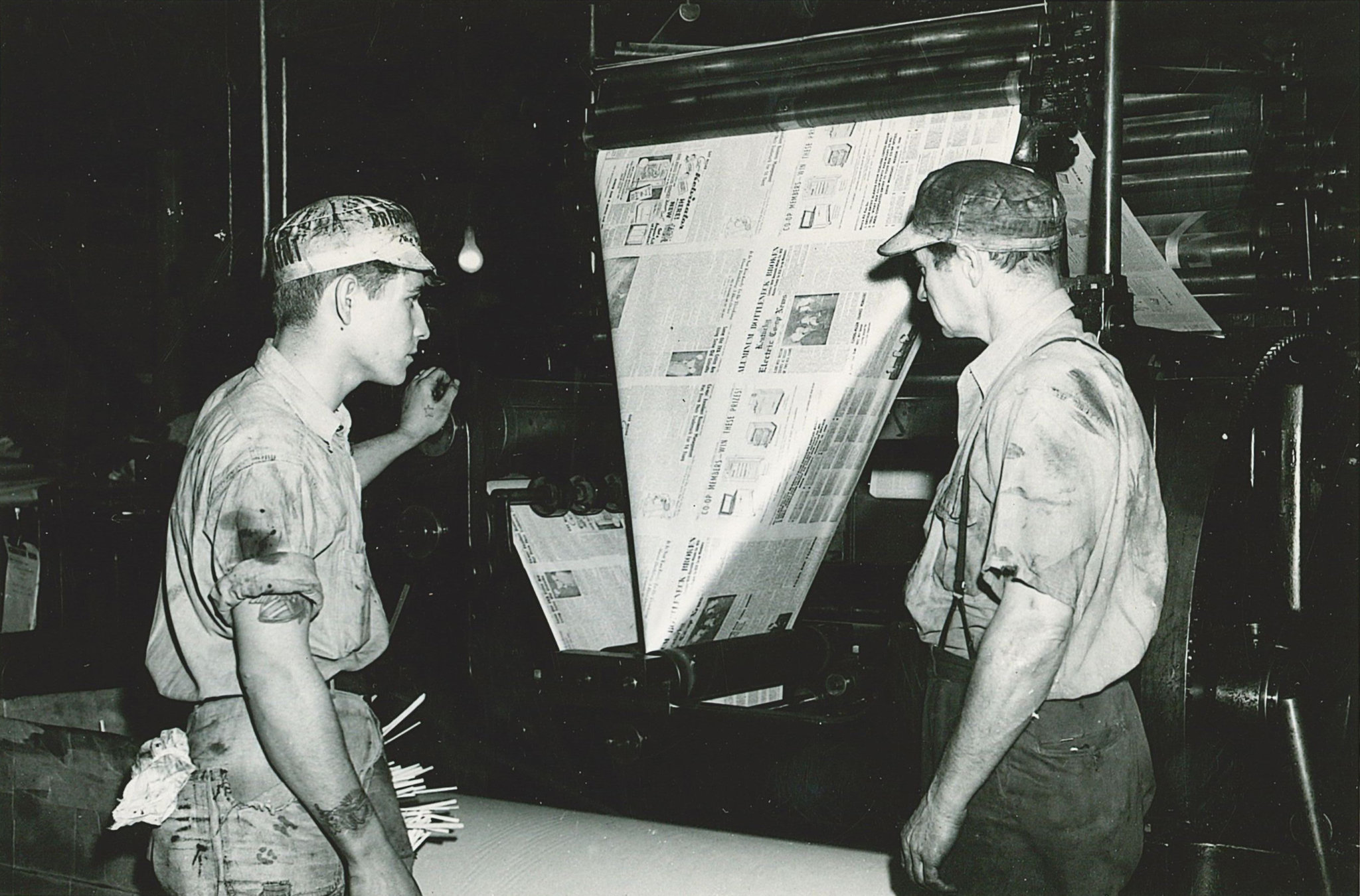
Looking back on Kentucky Living history
In our commemorative August 2023 edition, we celebrate 75 years in print with a look back at Kentucky Living through the decades—904 uninterrupted months of co-op news, energy updates, farm, home and garden tips, travel features, recipes and so much more. Explore your magazine’s beginnings as Kentucky Electric Co-op News in 1948, its 38 years as Rural Kentuckian from 1951 to 1989 and the last 34 years as Kentucky Living.
July: High flight

December 1950: Flying a Mustang
“High up the sky was blue,” Col. Philip Ardery wrote in December 1950. “Creamy little balls of cumulus floated lower at about three thousand. I wandered through the columns of fleece on up to twelve thousand feet and leveled off.” Ardery, who served as attorney for East Kentucky Power Cooperative and the statewide association during crucial legal battles in 1950, had been called back into the cockpit as commander of the 123rd Fighter Group after the outbreak of the Korean War. A veteran of bomber strikes over Europe during World War II, Ardery was now learning how to fly all over again—this time as a fighter pilot. “A few seconds later as the airspeed indicator passed 250, I felt like a man riding two thousand horses bareback,” he wrote. “Not much like a bomber—you seem to ride on this thing, not in it.” Nearly two decades later, we reviewed Ardery’s memoir, Bomber Pilot, published by The University Press of Kentucky in 1978. Read Ardery’s letters, along with our book review, at the link below.

November 2004: Silver Stars
Breckinridge County siblings Charles and Vicki Gaylord played a crucial role in helping two World War II veterans receive long-deferred Silver Star medals. The siblings’ story began when Charles, who enjoyed building model planes, built a replica of a B-24 for a teacher. Wanting to learn more, he discovered a website dedicated to the Jolly Rogers, a unit that flew B-24s during World War II. Charles connected with unit veterans Ray Smeltzer and James Case via email and learned about their heroic mission on Jan. 21, 1943, over Ambon Island in the South Pacific. After sinking an enemy ship as part of a three-plane mission, Smeltzer, Case and the crew of Roarin’ Rosie turned back to defend the other two bombers, despite having sustained damage to their own plane. When Charles and Vicki learned about the story—and a Silver Star recommendation that had never materialized—they persisted through layers of bureaucracy, writing letters to their congressman, the Joint Chiefs of Staff and the White House to help the veterans receive the Silver Stars they had earned.
June: Food for thought

February 1980: “Pop” science
University of Kentucky researcher G.M. White studied popcorn “popability” at the university’s agricultural engineering lab, using kernels that had different moisture levels and had been dried at different temperatures. The project benefited Kentucky farmers, who grew about 3.5% of the nation’s annual popcorn crop for about $1 million in income in 1978 ($6.8 million in today’s dollars). Experiment days produced as many as 15 batches of popcorn. “We never had trouble getting rid of our experimental results,” White said.

April 1986: A recipe from South Africa
Living in Parys, South Africa, Hester Habig received a copy of Rural Kentuckian, as this magazine was then called, from a pen pal in Kentucky. She enjoyed it so much that she wrote a letter to the editor, along with family recipes to share. “I am an Afrikaan-speaking South African, and the enclosed recipes have been handed down from my grandmother,” the 57-year-old wrote. “We still use the original measures as well as the ingredients.” Read Habig’s letter, as well as her recipe for Koeksisters, a traditional South African pastry.

January 2007: Growing organic
Sarah Paulson and Todd Elliott were organic farming pioneers when they started Sylvanus Farm in Burkesville in 1996. At the time, Sylvanus Farm was one of about 30 farms in Kentucky that were certified as organic by the Kentucky Department of Agriculture. (In the most recent Census of Agriculture, Kentucky had 184 certified organic farms.) Click the link to read more about organic farming in Kentucky in 2007, and be sure to read this month’s guide to community supported agriculture on page 16 of your magazine.
May: Reasons to get outside

January 1973: Cave Run Lake beginnings
Work was underway on the Cave Run Dam near Salt Lick, and hopes were that by the following summer Kentuckians and tourists alike would be able to enjoy lake recreation. Authorized by the Flood Control Act of 1938, the project did not begin until 1965 and was completed in 1974. The 8,270-acre lake is still a popular destination today, bringing in an estimated 257,000 visitors and $5.75 million annually, according to the U.S. Army Corps of Engineers.

January 1992: Bald eagles are back
Writer Gail King took readers along on a quest to spoteagles at Land Between the Lakes. Kentucky’s eagle population was making a comeback thanks to a “ban on DDT and an emphasis on wildlife refuges and hacking programs.” (Hacking is a controlled way to relocate eaglets.) In 1989, the offspring of an eagle hacked in Tennessee hatched the first Kentucky-born eaglet since the 1940s. According to the Kentucky Department of Fish and Wildlife Resources, the number of bald eagle nesting territories more than quadrupled from 2006 to 2019.

May 2010: Neighborhood fishing
Columnist Dave Baker and his 3-year-old son kept entertained until their bait ran out during a family fishing outing made possible by the Fishing in Neighborhoods program, or FINs for short. That year, the number of FIN lakes increased to 29. The Kentucky Department of Fish and Wildlife Resources stocks local ponds with trout and catfish to encourage more
people to fish. According to the agency, there are now 45 lakes in the program.
April: On the road

June 1970: Tombstone Junction
From its beginnings in late 1969 to the fire that closed it forever in 1991, Tombstone Junction offered a unique Old West-themed experience, complete with a working steam locomotive, a root beer serving saloon, costumed actors, live music, old-timey shops and more. Located near Cumberland Falls State Park, the attraction was created by local businessman Morris Stephens, with help from his father, Millard, and son, Rick. Its centerpiece was “Old Number 77,” a steam locomotive that made around 20 trips a day on a 2.5-mile track through Daniel Boone National Forest. Charlie Pennycuff and Jerome Martin, retired from the Kentucky-Tennessee Railroad, served as engineers. Approximately 27,000 people took rides on Old Number 77 during its first year. A series of fires ended the park’s operation, and today, almost nothing remains of Tombstone Junction but the memories.

March 1992: Taking the back roads
In 1960, the great American novelist John Steinbeck had already foreseen an unintended consequence of interstate highways. “When we get these thruways across America, as we will and as we must,” he wrote, “it will be possible to drive from New York to California without seeing a single thing.” In 1992, Nancy Farmer wrote in these pages that, while touring was a “lost art,” the curious traveler could still find “tourist courts and roadside cafes, neon signs and lighthouse filling stations” merely by leaving the beaten path. “They’re like lost civilizations, remnants of the past, with businesses that cater to local traffic and a few die-hard tourists,” she wrote. Farmer chronicled several sites you can still visit, including the Sherwood Inn in New Haven, Wigwam Village in Cave City, the Abraham Lincoln Birthplace and more. View the full article to read Farmer’s guide to touring U.S. 31, and then hit the road to see what treasures you might still find in 2023.
March: Lights, vegetables, gadgets

March 1972: Artificial light
If you were looking to gain a green thumb—or turn yours even greener—artificial light could be the solution. Artificial light could bring light to plants in dark corners or could result in blooming of out-of-season flowers in your home. Women’s Editor Fran Maierhauser pointed out plants were categorized as long day, short day or indeterminate, based on the amount of light they required. She recommended using an automatic timer, if you had one, so plants could get the light they needed even if you weren’t home.

March 1981: Garden growth
“Americans produced more food in their own backyard gardens last summer than at any time since the World War II victory garden era,” began The weekend gardener column by Fred Wiche. The Midwest was the No. 1 gardening region, followed by the south, east and west, he wrote. “The typical yield from a garden 22 x 30 feet is 597 pounds, valued at $460, making a garden worth from 50 cents to $1 a square foot,” he continued. “And despite inflation, the gardener’s spending has stayed fairly constant in the $20 range.”

March 2003: Garden gadgets
Gardening experts recommended their favorite tools to use in the garden, ranging from nursery spades to garden clogs to water wands. Columnist Shelly Nold said, “Manufacturers are putting fun back into gardening and tools.” Brightly colored tools—which were easier to spot in the tool shed—were gaining popularity. In general, gardeners agreed having a plan was important and pointed to the value of sharing your space with others. Robin Lee, of Lee’s Garden Center in Hodgenville, said, “Open up the garden gate and let the sunshine in.”
February: Education abounds
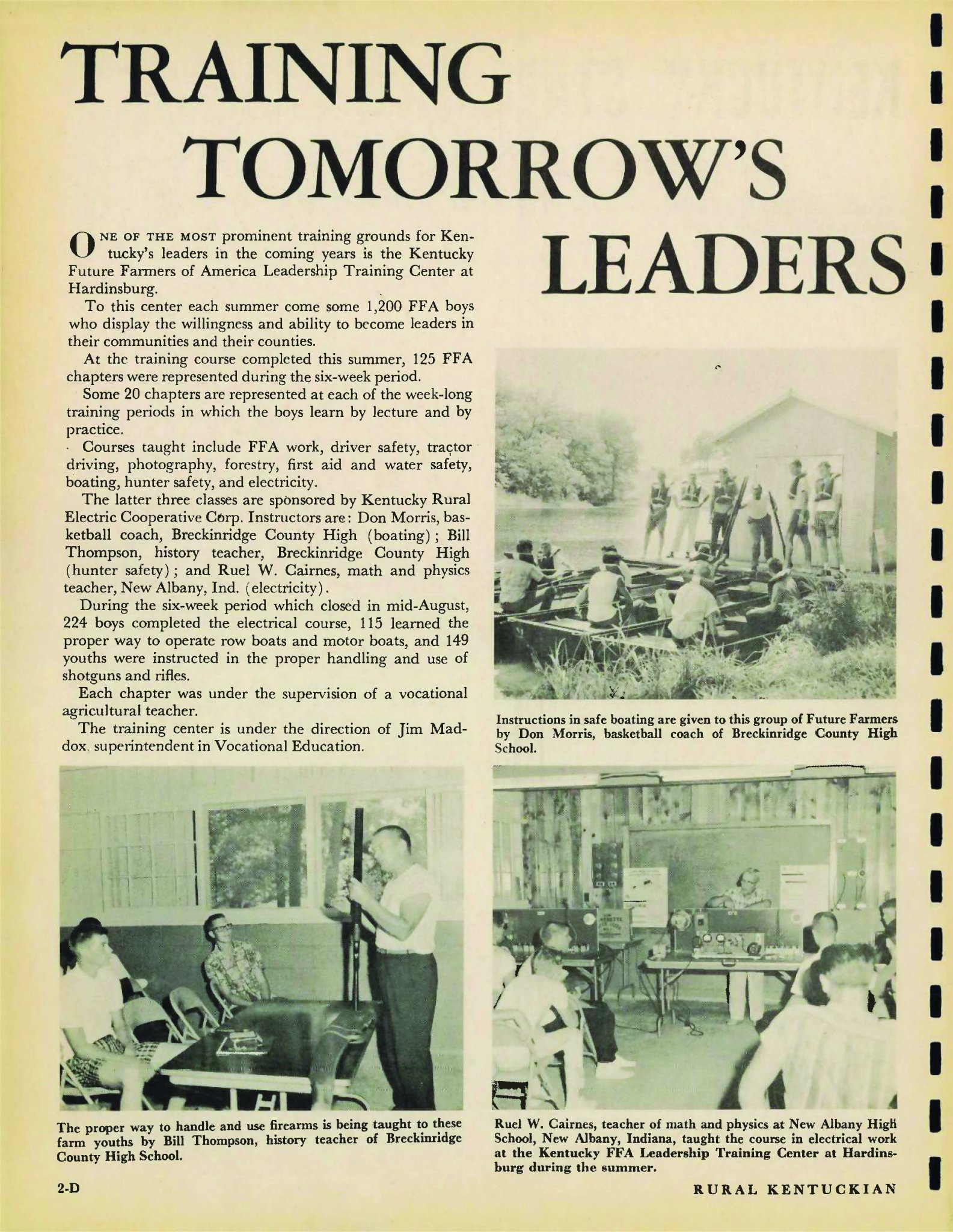
September 1964: Summer training courses
Nearly 1,200 boys attended summer training at the Kentucky Future Farmers of America Leadership Training Center in Hardinsburg. Kentucky Rural Electric Cooperative Corp. sponsored three classes: boating, hunter safety and electricity. Instructors in each of the classes were high school teachers, and attendees represented 125 FFA chapters throughout the state. During the six weeklong sessions, 224 boys completed the electrical course, 115 learned the proper way to operate row boats and motorboats, and 149 youths were instructed in hunter safety.

September 1985: Simulating real-life experience
Louisville’s Shirleen Sisney, a high school economics teacher who was recognized as Teacher of the Year by the Encyclopedia Britannica, Good Housekeeping and the Council of Chief State School Officers, shared her secrets to student success. Sisney created a simulation of a community within her classroom. Students earned chips to represent money, had jobs and had to pay bills. “One of my primary teaching goals is to develop a sense of self-worth and self-reliance in my students and I work hard to make them not need me,” she wrote.

February 2008: A major decision
For some college students, choosing a major is easy. For others, it’s not. Fifteen years ago, half to two-thirds of all college students were expected to change their major at least once. “It’s a mistake trying to orient students to a particular field before they’re ready,” said Karl Wallhausser, then a student advisor at Union College. According to 2004 data from the U.S.Department of Education, the top five majors for bachelor’s degree programs were (in order) business, social sciences and history, education, psychology and visual/performing arts.
January: Farm innovation
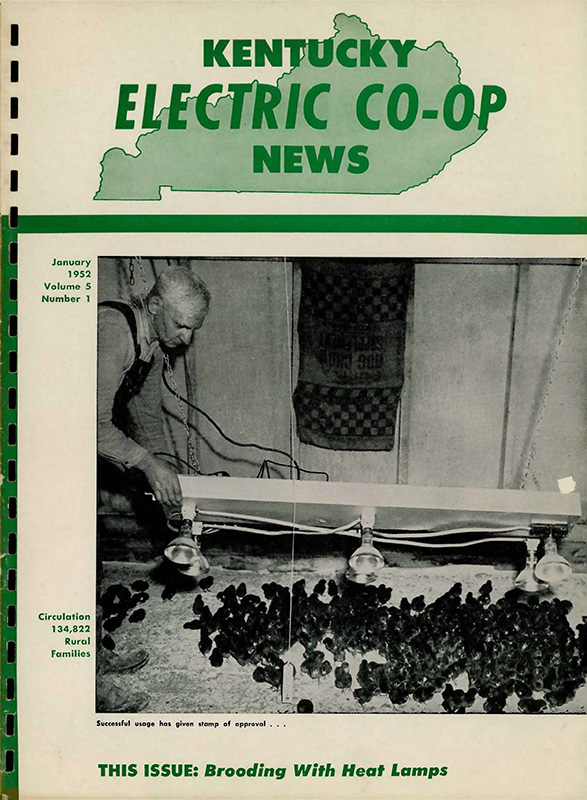
January 1952: Electricity transforms farm life
Rural electrification created new opportunities for farm families, from home to the milking barn to the henhouse. In January 1952, Kentucky Electric Co-Op News (as the magazine was then called) explored the growing number of farmers who used heat lamps for brooding chicks. “Enough have used this type of brooding to show that it is a satisfactory method,” the editors wrote. “However, many problems are yet to be solved, and some needed equipment is yet to be developed.” The magazine’s early decades show a sustained focus on helping consumer-members make the best use of new technology on their farms.
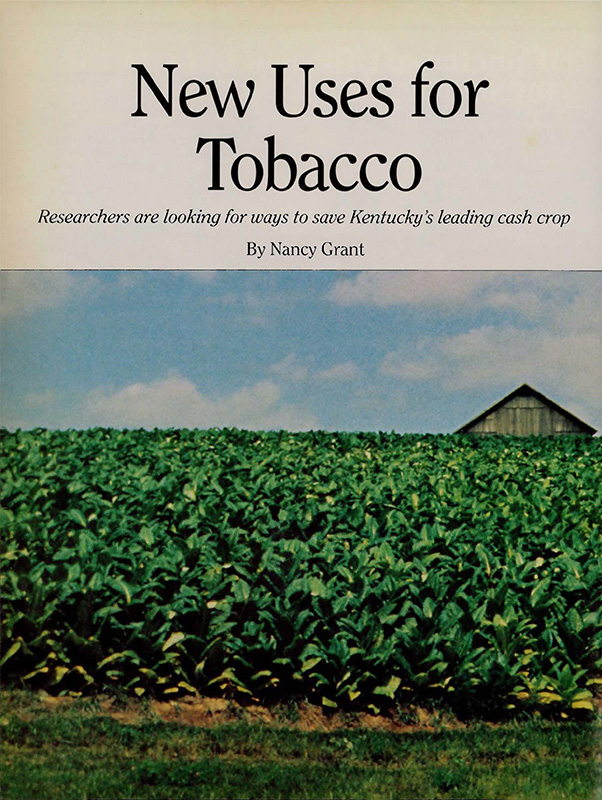
November 1994: Navigating tobacco’s demise
In 1953, the editors of this magazine wrote, “Nothing will ever replace tobacco as the chief cash crop on Kentucky’s farms.” But just 41 later, in November 1994, our pages pondered a new question: could Kentucky’s most important crop survive? With tobacco’s future “anything but certain,” Nancy Grant explored whether the crop—valued at $836 million in 1993—could be used for non-smoking-related products. “Will ‘tobacco grower’ still be a viable occupation in the 21st century?” Grant asked. “Should Kentucky’s 60,000 tobacco growers be looking for alternatives?”
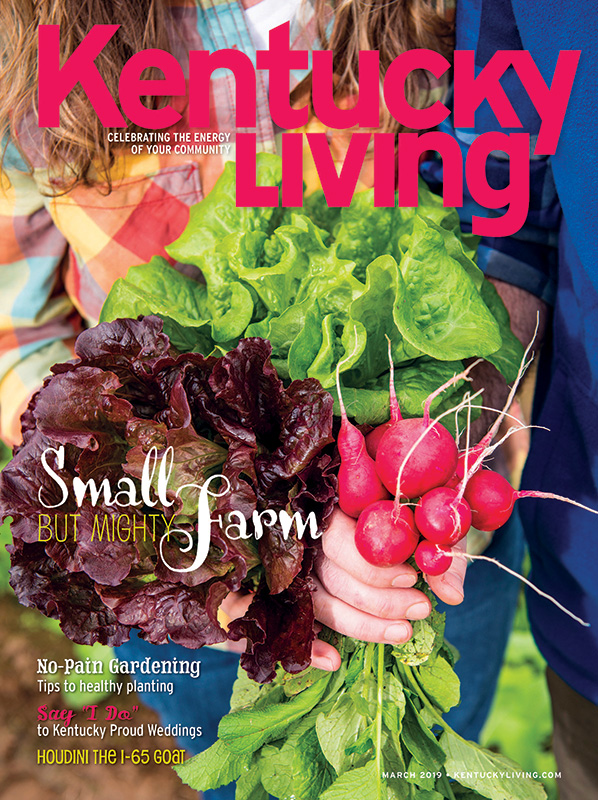
March 2019: Small-scale vegetable growing
Much has changed in Kentucky agriculture since 1948, but ingenuity and innovation are a constant. Just one example: Chris and Mary Breeze, featured in a March 2019 article by Michelle Eigenheer, ran a mini-farm in conjunction with their full-time jobs. The Breezes used a greenhouse and a high tunnel, which was funded by a USDA grant, to supply 15 families and several local restaurants with fresh produce from just 1.5 acres. The Fleming-Mason Energy consumer-members also used social media and a weekly email newsletter to share their enthusiasm with customers.

